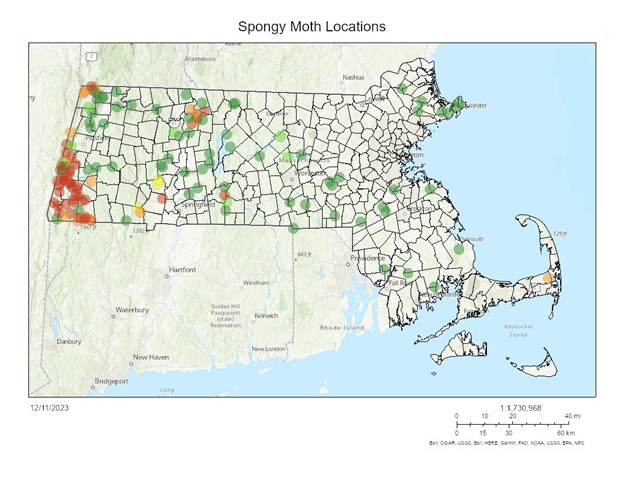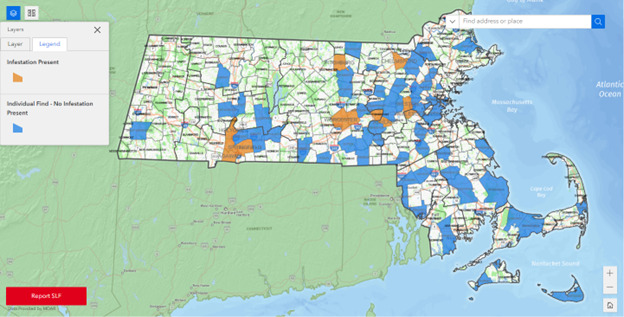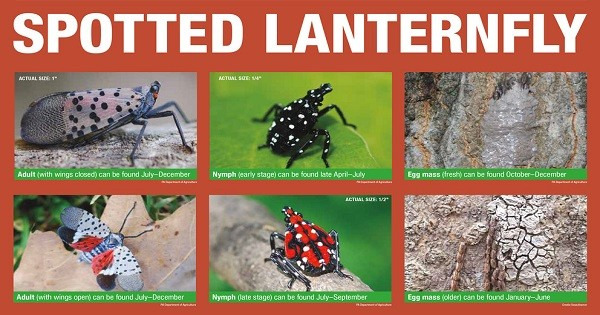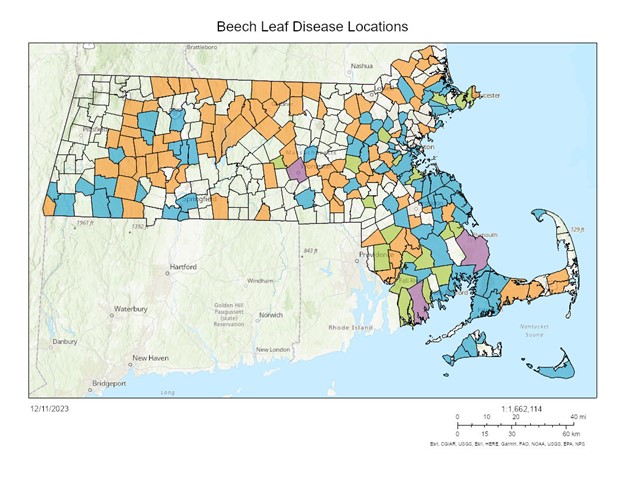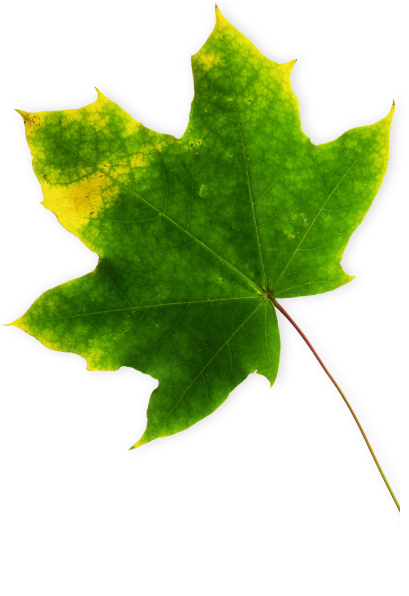Every year brings new challenges – personally and professionally – and it’s no different for our lawns and landscapes. This blog takes a look back at 2023 and discusses the biggest obstacles we dealt with here in Massachusetts.
Weather
Compared to the very dry weather we saw last year this year was quite the opposite. We saw significantly higher rain totals through the summer this year. From roughly June through September, we saw almost 2 times as much rain than we typically do in that time frame. It’s not just drought, too much rain can also stress plants. If soils do not drain well because they are compacted or due to the grade, water may pool. Saturated soils do not allow the roots to breathe and can lead to root injury. With higher amounts of rain, we tend to see more instances of foliar and root disease in the landscape. The yo-yo-ing back and forth between drought and surplus can also make it hard to diagnose and pinpoint potential causes of problems. Hopefully, this rain has helped to alleviate some of the drought stress seen on trees from last year. The larger the plant is the longer it can take to see the effects of these kinds of environmental stresses. Because we can’t directly manage all the environmental stressors that affect plants it is even more important to manage other stressors that we can. Start by planting trees and shrubs in the right place for their needs and treat for serious insects and diseases that can compound other stressors.
Insects
Typical defoliating caterpillars continue to be at low population levels where they are occurring in eastern Massachusetts. Spongy moth (formerly gypsy moth) caterpillars were heavy in the western part of the state in Berkshire County. Winter moth caterpillars if present are more of a problem for smaller ornamental and fruit trees rather than large mature trees simply due to the comparative size difference and percentage of damage. Bagworm however is a native pest that is naturally found in the south, but will occasionally make its way further north. Milder winter temperatures have allowed this caterpillar to persist and we have been seeing lots of injury this summer/fall. Bagworms typically feed on arborvitae and juniper but can be found on other species of trees and shrubs as well. Another new invasive pest has come to Massachusetts, the Box Tree Moth (Cydalima perspectalis). The Mass. Dept. of Agricultural Resources (MDAR) and the USDA have recently confirmed several instances on boxwood shrubs on Cape Cod. It is unclear how the moths were introduced to the area or how widespread this pest is. The main host of box tree moth is boxwoods, though, in their native range, the moths will also attack burning bush.
Spotted lanternfly, a new Invasive species found in Massachusetts in 2021, is beginning to spread. Established populations have now been found in Fitchburg, Worcester, Shrewsbury, and Springfield, Agawam, Holyoke, Chelmsford, Southboro, Ashland. This October Weston and Wellesley were added to the list of towns with active infestations. There have been several other sightings of individuals throughout the state, but no established populations were found associated with them. Spotted lanternfly is particularly problematic for grapes and fruit trees because of the damage to fruit and productivity. In the landscape, however, they are more of a nuisance for a wide variety of shrubs and trees. The primary concern is the high numbers and density of insects and the mess they make by their feeding. As sucking insects, they will produce lots of honeydew (liquid insect poop) and black sooty mold that will then grow on the sugary excrement. Everyone should be on the lookout for this pest since continued spread is very likely. If any life stages of this insect are found in Massachusetts, it should be reported here: https://massnrc.org/pests/slfreport.aspx .
Pests
Mosquitoes have been very persistent this year with the frequency of rain maintaining plenty of breeding habitat. Mosquitoes lay their eggs in standing water. Limit the number of places around your home for mosquitoes to breed by draining or discarding items that hold water and checking rain gutters and drains. Mosquitos can carry serious diseases. This year there were 163 positive West Nile Virus mosquito samples and 4 human cases of WNV collected and 27 positive EEE mosquito samples collected in the state.
There are several kinds of ticks to be on the lookout for in Massachusetts. Black-legged ticks are the most common ticks and are the primary transmitter of Lyme disease. Dog ticks are somewhat larger and less common to bite people. Lone star ticks are more aggressive in seeking out hosts compared to the questing most ticks do, waiting for a host to brush past. Lone star ticks are isolated to Cape Cod and the islands at this point. There is yet another new invasive tick species spreading called the Asian long-horned tick. Asian long-horned ticks have been primarily associated with livestock but can bite people and pets as well and do not need to mate to produce thousands of eggs.
The same precautions to avoid black-legged ticks will help with these other species as well. Aside from regular yard treatments, repellents containing DEET, picaridin, and oil of lemon eucalyptus can be used for both ticks and mosquitoes directly on the skin or permethrin can be used to treat clothes.
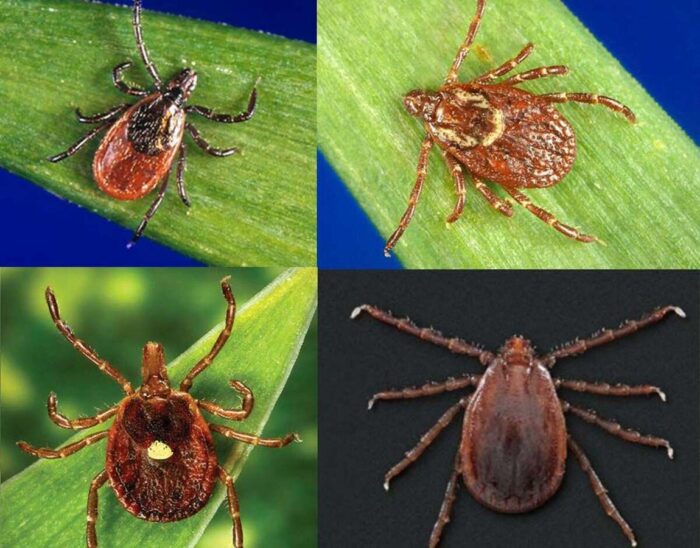
Top, from left: The black-legged or deer tick and American dog tick; bottom, from left: lone star tick and Asian long-horned tick Smith Collection/Gado/Getty Images; CDC
Diseases
Frequent rains continued throughout the summer this year, extending the infection period for many diseases. These are some of the diseases the Plant Diagnostic Laboratory at the University of Massachusetts Amherst saw over the season.
Beech leaf disease (BLD) is an important new disease of European and American beech trees. It is still unknown how exactly the disease is spreading, but it is spreading fast. The map shows how much the disease has spread in the last few years. Unlike most other plant diseases that are caused by fungi, BLD is caused by a leaf-infecting nematode (a microscopic roundworm). Early signs of infection can be identified by dark banding between the leaf veins when looking up at backlit leaves. Treatment options are limited at this time, but there are treatments that may help. Infection for only a few years may be enough to kill some trees. This disease only adds to the more common Phytophthora bleeding cankers, and beech bark disease causing decline in beech trees. It is worthwhile to begin treatment even with seemingly healthy trees to help reduce infection.
Various types of stem cankering fungi have been observed on lots of plant species. Stem cankers are often opportunistic and do not cause much harm under normal circumstances with healthy and robust trees. Trees require moist, well-drained soils in order to thrive. Conditions often found in residential landscapes such as restricted root zones, soil compaction, sandy soil competition from surrounding trees, and turfgrass drought or even overwatering contribute to decline. Symptoms of stem cankering include yellowing/browning leaves/needles, premature shedding, canopy thinning, and branch dieback. Scale insects can also be a contributor, creating the openings that the disease can enter the pant.
If you have seen any symptoms on your trees and shrubs that you think are not normal, let us know. We would be happy to help identify the problem and recommend solutions to help manage your plants. You can reach us at info@naturaltree.com or give us a call at 781-297-3674. For additional blog articles, click here!

